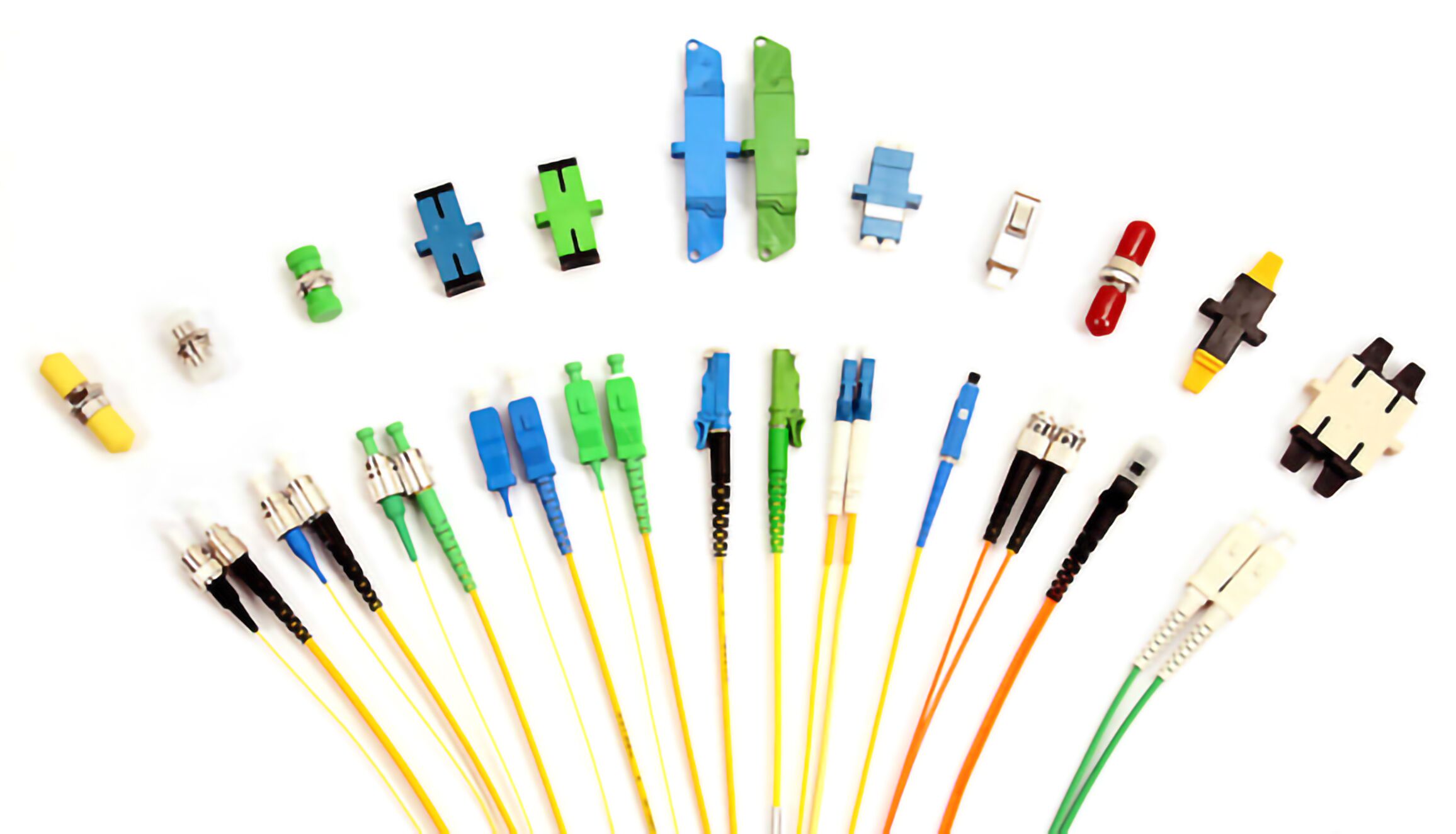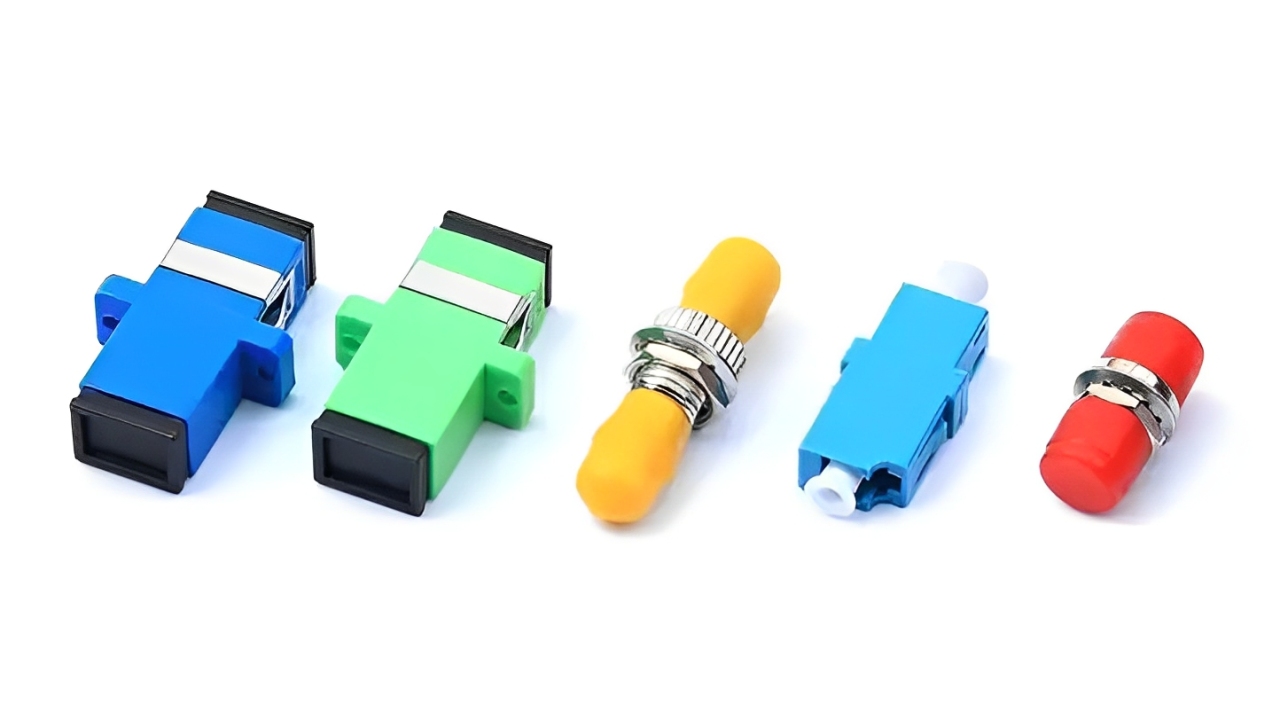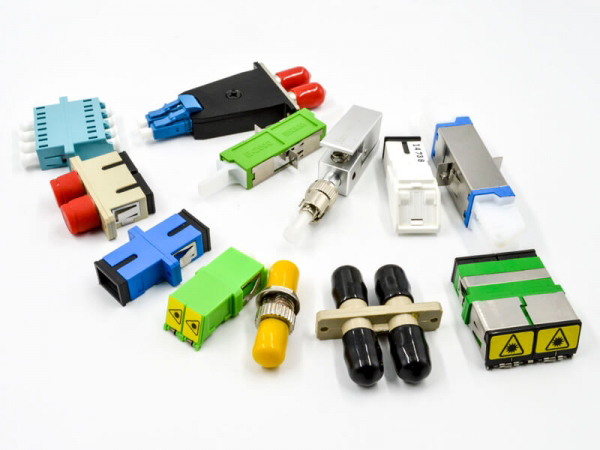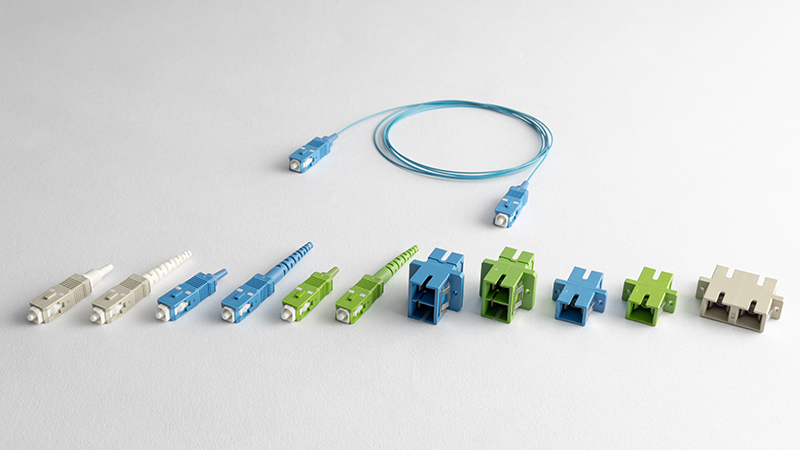LC/SC adapters have become the backbone of enterprise networks due to their ability to balance performance and practicality. Their compact size suits high-density environments, while their high-speed data transmission capabilities meet the demands of modern connectivity. For instance:
- The rising need for compact designs has made LC connectors, such as the LC Simplex adapter and LC Duplex adapter, indispensable in space-constrained setups.
- SC adapters, including the SC Simplex adapter and SC Duplex adapter, continue to gain traction for their durability and ease of use in enterprise applications.
Recent innovations, such as corrosion-resistant materials and reinforced designs, ensure these adapters excel in durability and environmental resilience. Their ability to support high-speed, low-loss connections makes them ideal for 5G technology and expanding data centers.
Key Takeaways
- LC/SC adapters are important for crowded spaces. They save space in big networks.
- These adapters send data quickly with little signal loss. This makes them great for things like 5G and cloud storage.
- LC/SC adapters are strong and last long. They can handle many uses without breaking.
- They work with both single-mode and multimode fibers. This helps them fit easily into current networks.
- Cleaning them often keeps them working well for a long time. This also helps avoid network problems.
Understanding LC/SC Adapters
Overview of LC Adapters
LC adapters are compact and efficient connectors designed for high-density fiber optic networks. Their small form factor (SFF) makes them ideal for installations where space is limited. These adapters use a 1.25 mm ferrule, which is half the size of the ferrule used in traditional ST connectors. This design enables LC adapters to deliver excellent performance in single-mode and multimode fiber optic systems.
Equipment manufacturers increasingly favor LC adapters due to their ability to save space without compromising performance. Their compact size allows for higher port density, making them a preferred choice for modern enterprise networks.
| Feature | Description |
|---|---|
| Form Factor | Small form factor (SFF) fiber optic connector. |
| Ferrule Size | Uses a 1.25 mm ferrule, half the size of the ST connector. |
| Performance | High performance, suitable for single-mode and multimode applications. |
| Manufacturer Preference | Widely adopted for its compact design and space-saving capabilities. |
Overview of SC Adapters
SC adapters are known for their simplicity and durability. They feature a plug-in latch mechanism, which ensures secure connections and easy handling. Constructed from engineering-grade plastic, SC adapters are both cost-effective and robust.
These adapters are larger than LC adapters, with a 2.5 mm housing. While this size makes them less suitable for densely populated racks, their affordability and ease of use make them a popular choice for many enterprise applications.
- SC connectors are larger than LC connectors, making them less ideal for high-density setups.
- The 2.5 mm housing contributes to their size but ensures durability.
- The snap-on design simplifies installation and maintenance.
| Connector Type | Characteristics | Performance Parameters |
|---|---|---|
| SC Connector | Snap-on, square, plug-in latch, made of plastic | Low price, easy to plug/unplug |
| LC Connector | Smaller size, suitable for dense installations | Higher density, better for space-saving |
| FC Connector | Screw-on, more secure connection | Higher performance in high-vibration settings |
Key Features of LC/SC Adapters
LC/SC adapters dominate enterprise networks due to their superior performance and reliability. They exhibit low insertion loss, ensuring minimal signal degradation during data transmission. High return loss values reduce interference, enhancing overall network efficiency.
Durability is another key feature. These adapters can withstand numerous connection cycles without performance loss. Their ability to operate across a wide temperature range and resist environmental factors like moisture and dust makes them suitable for diverse applications.
| Metric | Description |
|---|---|
| Insertion Loss (IL) | Measures signal power loss through a connector; lower values indicate better signal integrity. |
| Return Loss (RL) | Assesses how much outgoing signal is reflected back; higher values reduce interference. |
| Durability | Indicates how many cycles of engagement the connector can withstand without performance loss. |
| Operating Temperature Range | Shows the temperature limits within which the connector operates effectively. |
| Environmental Sealing | Tests the connector’s ability to withstand moisture and dust in hostile environments. |
LC/SC adapters continue to set the standard for enterprise networks, offering a balance of compact design, high performance, and durability.
Importance of LC/SC Adapters in Fiber Optic Connectivity
LC/SC adapters play a pivotal role in modern fiber optic connectivity. Their design and functionality address the growing demands of high-speed data transmission and reliable network performance. These adapters ensure seamless connections between fiber optic cables, minimizing signal loss and maintaining data integrity.
One of the primary reasons for their importance lies in their adaptability to various applications. LC adapters, with their compact and high-density design, are widely used in data centers and telecommunications. SC adapters, known for their push-pull mechanism and ease of use, excel in local area networks (LANs) and wide area networks (WANs). The following table highlights their key features and applications:
| Adapter Type | Key Features | Applications |
|---|---|---|
| LC | Compact, high-density, latch-style locking mechanism | Data centers, telecommunications |
| SC | Push-pull mechanism, ease of use, minimal signal loss | LANs, WANs |
The low insertion loss and high return loss of LC/SC adapters enhance network efficiency. These attributes ensure that data transmission remains stable even in high-demand environments. Their durability further solidifies their importance. Designed to withstand frequent connections and disconnections, they maintain performance over extended periods.
Note: The ability of LC/SC adapters to support both single-mode and multimode fibers makes them versatile for diverse network setups. This flexibility ensures compatibility with existing infrastructure while preparing networks for future advancements.
In enterprise networks, LC/SC adapters contribute to cost efficiency by reducing the need for frequent replacements. Their robust construction and reliable performance minimize downtime, which is critical for maintaining business operations. As fiber optic technology continues to evolve, these adapters remain indispensable for ensuring seamless connectivity and optimal network performance.
Why LC/SC Adapters Dominate Enterprise Networks
Compact Design and Space Efficiency
The compact design of LC/SC adapters makes them indispensable in enterprise networks, where space optimization is critical. LC adapters, with their small form factor (SFF), allow for higher port density in fiber optic panels and equipment. This feature is particularly beneficial in data centers and telecommunications hubs, where maximizing rack space is a priority. SC adapters, while slightly larger, also contribute to efficient space utilization due to their ergonomic design and compatibility with various connector types.
| Feature | Description |
|---|---|
| Compact, ergonomic design | Ultimate portability |
| Compatible Connector Type | FC, LC, SC, ST |
The ability to integrate seamlessly with multiple connector types enhances the versatility of LC/SC adapters. Their compact and ergonomic designs not only save space but also simplify installation and maintenance, reducing operational costs for enterprises.
High-Speed Data Transmission
LC/SC adapters excel in supporting high-speed data transmission, a critical requirement for modern enterprise networks. Performance benchmarks reveal their ability to maintain low insertion loss and high return loss, ensuring minimal signal degradation during data transfer. These attributes make them ideal for high-speed Ethernet networks and other demanding applications.
| Connector Type | Typical Insertion Loss | Typical Return Loss (UPC) | Return Loss (APC) |
|---|---|---|---|
| LC | 0.1 – 0.3 dB | ≥ 45 dB | ≥ 60 dB |
| SC | 0.2 – 0.4 dB | ~35 – 40 dB | ≥ 60 dB |
The superior performance of LC/SC adapters ensures reliable connectivity, even in high-demand environments like cloud infrastructure and 5G networks. Their ability to handle high-speed data transmission with minimal signal loss positions them as a cornerstone of enterprise network infrastructure.
Low Insertion Loss and High Performance
The low insertion loss and high performance of LC/SC adapters set them apart from other connectivity solutions. LC connectors, known for their precision and efficiency, perform exceptionally well in high-density environments. SC connectors, while slightly larger, provide robust connections that ensure durability and reliability over time.
- LC connectors exhibit low insertion loss and high precision, making them ideal for high-density environments.
- SC connectors, while larger, provide strong connections with moderate insertion loss, ensuring durability and reliability.
- Both connector types support high-speed Ethernet networks, reducing signal loss and improving overall throughput.
These characteristics make LC/SC adapters a preferred choice for enterprises seeking to optimize network performance. Their ability to maintain signal integrity across long distances and under varying environmental conditions ensures consistent and reliable connectivity.
Ease of Installation and Maintenance
LC/SC adapters simplify installation and maintenance processes in enterprise networks. Their user-friendly design allows technicians to establish secure connections quickly, reducing the time required for setup. The push-pull mechanism of SC adapters ensures effortless insertion and removal, while the latch-style locking system of LC adapters provides a secure fit without the need for additional tools. These features make them ideal for environments where frequent reconfiguration or upgrades are necessary.
Routine maintenance becomes more manageable with LC/SC adapters due to their robust construction and modular design. Technicians can easily replace damaged components without disrupting the entire network. This modularity minimizes downtime and ensures uninterrupted operations. Additionally, the standardized design of these adapters ensures compatibility with a wide range of fiber optic cables and connectors, further streamlining maintenance tasks.
Tip: Proper cleaning of LC/SC adapters using specialized tools can significantly enhance their performance and longevity. Regular maintenance ensures optimal signal quality and reduces the risk of network failures.
The ease of installation and maintenance offered by LC/SC adapters contributes to their widespread adoption in enterprise networks. Their design not only saves time but also reduces operational costs, making them a cost-effective solution for modern connectivity needs.
Compatibility with Modern Fiber Optic Systems
LC/SC adapters exhibit exceptional compatibility with modern fiber optic systems, making them a cornerstone of enterprise network infrastructure. Their ability to support both single-mode and multimode fibers ensures seamless integration with existing setups. This versatility allows organizations to upgrade their networks without replacing the entire infrastructure, saving both time and resources.
The compact design of LC adapters aligns with the high-density requirements of modern data centers, while SC adapters remain a reliable choice for less space-constrained environments. Both types of adapters are compatible with advanced technologies such as Dense Wavelength Division Multiplexing (DWDM) and Coarse Wavelength Division Multiplexing (CWDM). These technologies enable the transmission of multiple data streams over a single fiber, enhancing network efficiency.
Emerging technologies like 5G and the Internet of Things (IoT) demand high-speed, low-latency connections. LC/SC adapters meet these requirements by providing low insertion loss and high return loss, ensuring minimal signal degradation. Their ability to operate across a wide temperature range and resist environmental factors further enhances their compatibility with modern systems.
Note: The standardized design of LC/SC adapters ensures interoperability with a wide range of equipment from different manufacturers. This feature simplifies network expansion and upgrades, making them a future-proof choice for enterprises.
The compatibility of LC/SC adapters with modern fiber optic systems underscores their importance in enterprise networks. Their ability to adapt to evolving technologies ensures they remain relevant in an ever-changing connectivity landscape.
Trends Driving LC/SC Adapter Usage
Advancements in Compact and High-Density Designs
The demand for compact and high-density designs in fiber optic connectivity has driven significant advancements in LC/SC adapters. These adapters now feature innovative designs that maximize space efficiency without compromising performance. For instance, splice-on connectors have become a popular choice for high-density applications, offering seamless integration in environments where space is at a premium. Fusion splice-on connectors, designed for harsh conditions, further demonstrate the adaptability of these solutions.
| Connector Type | Description |
|---|---|
| LC/SC Connectors | Assorted splice-on connectors for high-density setups |
| Fusion Splice-on Connector | Suitable for harsh environments |
| MPO Patch Cord | High-density interconnect for data centers |
These advancements align with the growing need for efficient use of rack space in data centers and telecommunications hubs. The compact form factor of LC adapters, in particular, allows for higher port density, making them indispensable in modern enterprise networks. SC adapters, while slightly larger, continue to evolve with ergonomic designs that enhance usability in less space-constrained environments.
Note: The ability of LC/SC adapters to integrate seamlessly with high-density systems ensures their relevance in the evolving landscape of fiber optic connectivity.
Growing Demand for High-Speed Connectivity
The increasing reliance on high-speed connectivity has positioned LC/SC adapters as essential components in enterprise networks. These adapters support high-speed data transmission with minimal signal loss, making them ideal for applications such as 5G networks, cloud computing, and fiber-to-the-home (FTTH) services.
| Year | Market Value (USD) | CAGR (%) |
|---|---|---|
| 2022 | 6,004.4 million | - |
| 2023 | 6,640.9 million | 12.2 |
| 2033 | 21,059.0 million | - |
The telecom sector, in particular, has emerged as a lucrative market for LC/SC adapters. Their ability to handle high bandwidth requirements ensures reliable performance in demanding environments. As enterprises adopt advanced technologies like Dense Wavelength Division Multiplexing (DWDM) and Coarse Wavelength Division Multiplexing (CWDM), the role of these adapters becomes even more critical.
The projected market growth underscores the importance of LC/SC adapters in meeting the increasing demand for high-speed connectivity. Their low insertion loss and high return loss make them a cornerstone of modern network infrastructure.
Enhanced Durability and Reliability
Durability and reliability remain key factors driving the adoption of LC/SC adapters. These adapters are designed to withstand frequent connections and disconnections without performance degradation. Innovations such as corrosion-resistant materials and reinforced housings have further enhanced their resilience, making them suitable for diverse environments, including harsh industrial settings.
| Aspect | Details |
|---|---|
| Market Value (2022) | USD 695.17 million |
| Projected Market Value (2030) | USD 2097.13 million |
| CAGR (2022-2030) | 14.80% |
The ability of LC/SC adapters to operate across a wide temperature range and resist environmental factors like moisture and dust ensures consistent performance. This reliability is particularly important in mission-critical applications, where network downtime can result in significant operational losses.
Tip: Regular maintenance and proper cleaning of LC/SC adapters can further enhance their durability, ensuring optimal performance over extended periods.
The combination of advanced materials, robust construction, and innovative designs ensures that LC/SC adapters continue to meet the evolving demands of enterprise networks. Their durability and reliability make them a trusted choice for organizations seeking long-term connectivity solutions.
Compatibility with Emerging Technologies (e.g., 5G, IoT)
The rapid adoption of 5G and the Internet of Things (IoT) has transformed the requirements for network infrastructure. LC/SC adapters have proven to be highly compatible with these emerging technologies due to their advanced design and adaptability. Their ability to support high-speed, low-latency connections makes them indispensable in modern networks.
Several technical advancements highlight how LC/SC adapters align with the demands of 5G and IoT:
- All-Optical Networks: These networks aim to reduce latency and improve efficiency, which are critical for 5G and IoT applications. LC/SC adapters facilitate seamless integration into such systems by ensuring minimal signal loss and high return loss.
- Network Slicing: This feature allows multiple services to operate on the same physical infrastructure. LC/SC adapters enhance this adaptability by providing reliable connections across diverse environments.
- Intelligent Network Management: The incorporation of AI and machine learning in network management systems supports the dynamic requirements of 5G and IoT. LC/SC adapters, with their robust performance, ensure compatibility with these intelligent systems.
The versatility of LC/SC adapters extends to their ability to handle both single-mode and multimode fibers. This feature ensures that they can meet the diverse needs of IoT devices, which often require a mix of short-range and long-range connectivity. Additionally, their compact design aligns with the high-density requirements of 5G base stations, where space optimization is crucial.
Note: The role of LC/SC adapters in supporting emerging technologies underscores their importance in future-proofing enterprise networks. Their ability to adapt to evolving demands ensures their continued relevance in the connectivity landscape.
Expansion of Data Centers and Cloud Infrastructure
The exponential growth of data centers and cloud infrastructure has created a pressing need for reliable and efficient connectivity solutions. LC/SC adapters have emerged as a cornerstone of this expansion due to their high performance and space-saving design.
Modern data centers prioritize high-density configurations to maximize operational efficiency. LC adapters, with their small form factor, enable higher port density, making them ideal for these environments. SC adapters, while slightly larger, continue to play a vital role in less space-constrained setups. Both types of adapters support advanced technologies like Dense Wavelength Division Multiplexing (DWDM) and Coarse Wavelength Division Multiplexing (CWDM), which are essential for optimizing bandwidth in cloud environments.
The scalability of LC/SC adapters also contributes to their widespread adoption in data centers. Their compatibility with both single-mode and multimode fibers allows organizations to expand their networks without significant infrastructure changes. This flexibility is particularly valuable in cloud computing, where the demand for high-speed data transmission continues to grow.
Tip: Regular maintenance of LC/SC adapters can enhance their performance in data centers, ensuring minimal downtime and optimal network efficiency.
The durability of LC/SC adapters further solidifies their role in supporting cloud infrastructure. Designed to withstand frequent connections and disconnections, they maintain consistent performance over time. This reliability is critical in data centers, where even minor disruptions can lead to significant operational losses.
The expansion of data centers and cloud infrastructure highlights the indispensable role of LC/SC adapters. Their ability to meet the demands of high-density, high-speed environments ensures their continued relevance in the evolving connectivity landscape.
Comparing LC/SC Adapters with Other Options
LC/SC Adapters vs. ST Adapters
LC/SC adapters and ST adapters serve distinct purposes in fiber optic networks. LC/SC adapters excel in high-density environments due to their compact design. In contrast, ST adapters, with their bayonet-style twist-lock mechanism, are better suited for legacy systems and environments requiring secure connections.
| Feature | LC/SC Adapters | ST Adapters |
|---|---|---|
| Design | Compact, space-efficient | Larger, twist-lock mechanism |
| Applications | High-density setups, modern networks | Legacy systems, industrial settings |
| Ease of Use | Push-pull or latch-style mechanism | Requires twisting for secure fit |
Note: While ST adapters offer durability, their larger size and manual locking mechanism make them less practical for modern enterprise networks.
LC/SC Adapters vs. MTP/MPO Adapters
MTP/MPO adapters cater to high-bandwidth applications, such as data centers requiring multi-fiber connections. LC/SC adapters, on the other hand, focus on single-fiber connections, offering precision and reliability in standard enterprise networks.
| Aspect | LC/SC Adapters | MTP/MPO Adapters |
|---|---|---|
| Fiber Type | Single-fiber | Multi-fiber |
| Bandwidth | Moderate to high | Extremely high |
| Use Case | General enterprise networks | Data centers, cloud infrastructure |
Tip: MTP/MPO adapters are ideal for large-scale data transmission, but LC/SC adapters remain the go-to choice for most enterprise setups due to their simplicity and cost-effectiveness.
Advantages of LC/SC Adapters in Enterprise Networks
LC/SC adapters dominate enterprise networks because of their versatility, performance, and ease of use. Their compact design supports high-density configurations, while their low insertion loss ensures minimal signal degradation. Additionally, their compatibility with both single-mode and multimode fibers makes them adaptable to various applications.
- Cost Efficiency: LC/SC adapters reduce operational costs by minimizing downtime and maintenance needs.
- Durability: These adapters withstand frequent connections and disconnections without performance loss.
- Future-Proofing: Their compatibility with emerging technologies ensures long-term relevance.
LC/SC adapters strike a balance between performance and practicality, making them indispensable in modern enterprise networks.
LC/SC adapters have established themselves as indispensable components in enterprise networks. Their compact design and high performance make them ideal for modern connectivity needs. Emerging trends, such as advancements in high-speed data transmission and enhanced durability, further solidify their relevance. These adapters also offer compatibility with cutting-edge technologies, ensuring seamless integration into evolving systems.
As enterprise networks continue to grow, LC/SC adapters will remain essential for maintaining reliable and efficient connectivity. Their adaptability and robust performance position them as a future-proof solution for modern infrastructure.
FAQ
What are LC/SC adapters used for in enterprise networks?
LC/SC adapters connect fiber optic cables, ensuring seamless data transmission. They are essential in enterprise networks for high-speed connectivity, low signal loss, and compatibility with modern systems. Their compact design makes them ideal for high-density environments like data centers and telecommunications hubs.
How do LC/SC adapters differ from other fiber optic connectors?
LC/SC adapters stand out due to their compact size and high performance. LC adapters offer a small form factor for high-density setups, while SC adapters provide durability and ease of use. Compared to ST or MTP/MPO adapters, LC/SC adapters balance space efficiency and reliability.
Are LC/SC adapters compatible with 5G and IoT technologies?
Yes, LC/SC adapters support 5G and IoT technologies by providing high-speed, low-latency connections. Their ability to handle both single-mode and multimode fibers ensures adaptability to diverse network requirements. They also integrate seamlessly with advanced systems like Dense Wavelength Division Multiplexing (DWDM).
How can LC/SC adapters improve network performance?
LC/SC adapters enhance network performance by minimizing signal loss and interference. Their low insertion loss and high return loss ensure stable data transmission. These features make them suitable for high-demand environments, including cloud infrastructure and telecommunications networks.
What maintenance is required for LC/SC adapters?
Regular cleaning with specialized tools is essential to maintain LC/SC adapters. This prevents dust and debris from affecting performance. Periodic inspections ensure optimal signal quality and reduce the risk of network failures, prolonging the lifespan of the adapters.
Post time: Apr-23-2025




